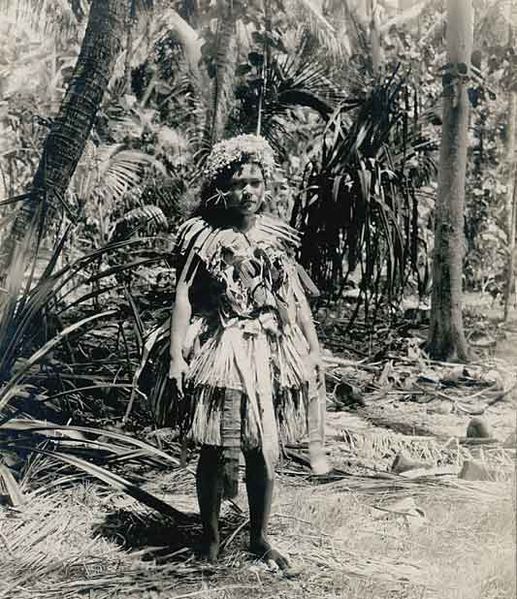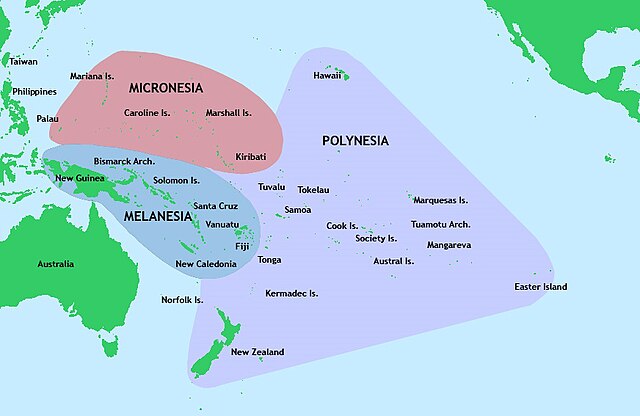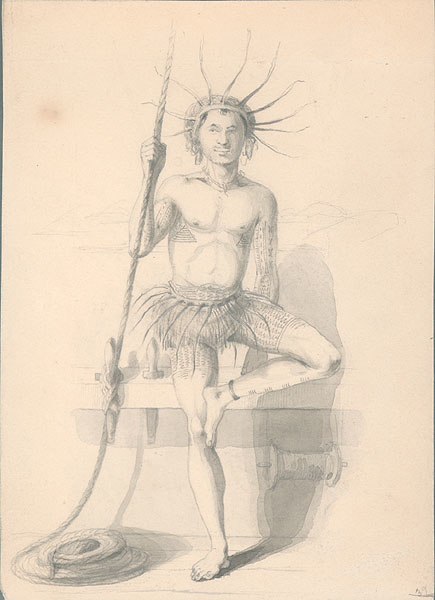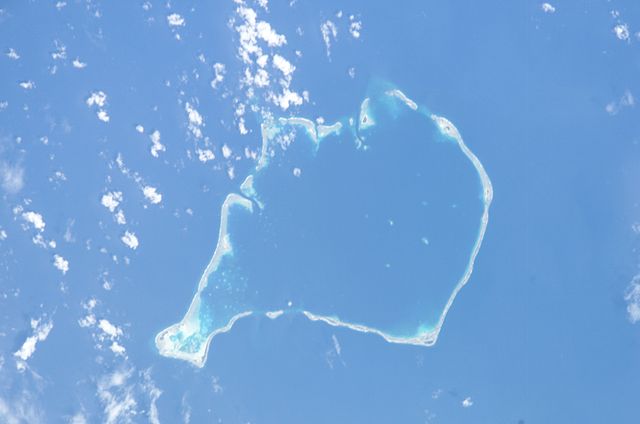The first inhabitants of Tuvalu were Polynesians, so the origins of the people of Tuvalu can be traced to the spread of humans out of Southeast Asia, from Taiwan, via Melanesia and across the Pacific islands of Polynesia.
Woman on Funafuti, Harry Clifford Fassett (1900).
Polynesia is the largest of three major cultural areas in the Pacific Ocean. Polynesia is generally defined as the islands within the Polynesian triangle.
Tuvaluan man in traditional costume drawn by Alfred Agate in 1841 during the United States Exploring Expedition.
View of Fenua Tapu, Nui atoll.
Funafuti is the capital of the island nation of Tuvalu. It has a population of 6,320 people, and so it has more people than the rest of Tuvalu combined, with approximately 60% of the population. It consists of a narrow sweep of land between 20 and 400 metres wide, encircling a large lagoon 18 km long and 14 km wide. The average depth of the Funafuti lagoon is about 20 fathoms. With a surface area of 275 square kilometres (106.2 sq mi), it is by far the largest lagoon in Tuvalu. The land area of the 33 islets around the atoll of Funafuti totals 2.4 square kilometres (0.9 sq mi); taken together, they constitute less than one percent of the total area of the atoll. Cargo ships can enter Funafuti's lagoon and dock at the port facilities on Fongafale.
Aerial image of Funafuti atoll
Image: Funafuti airport Fiji Airways
Image: Fetu Ao Lima (Morning Star Church), Congregational Christian Church of Tuvalu
Image: Funafuti Plage w








